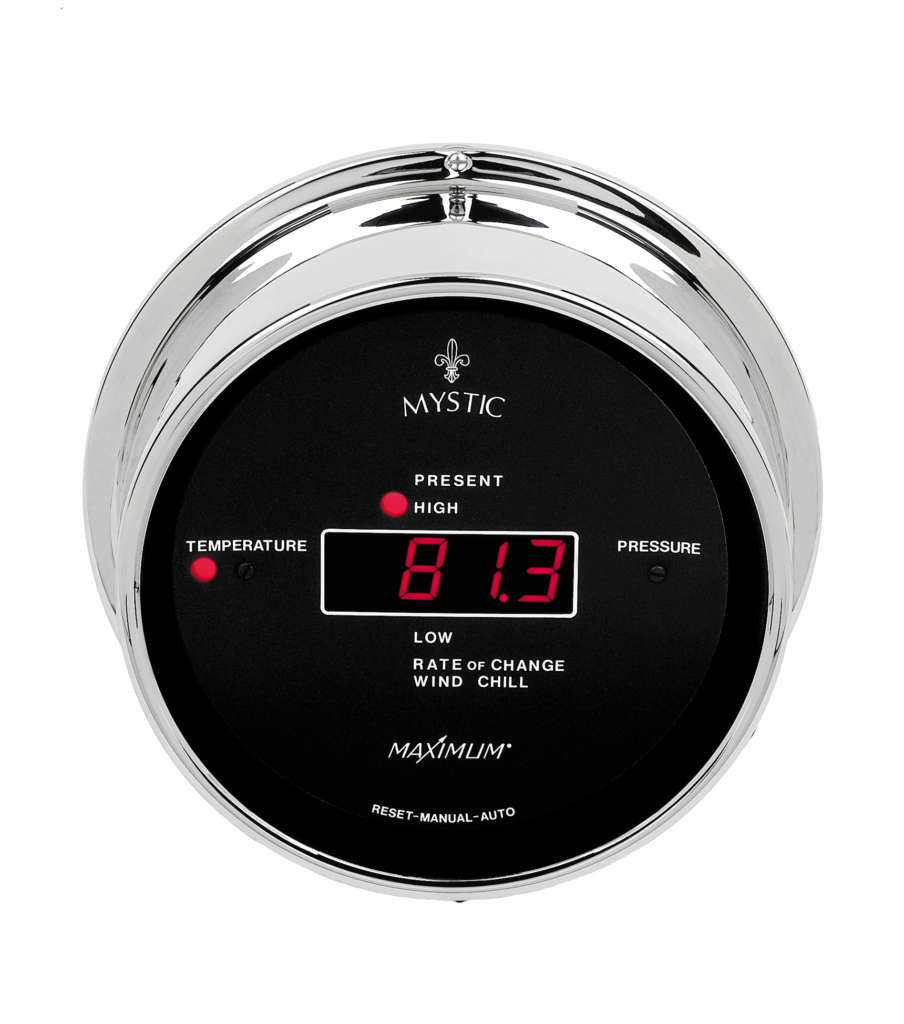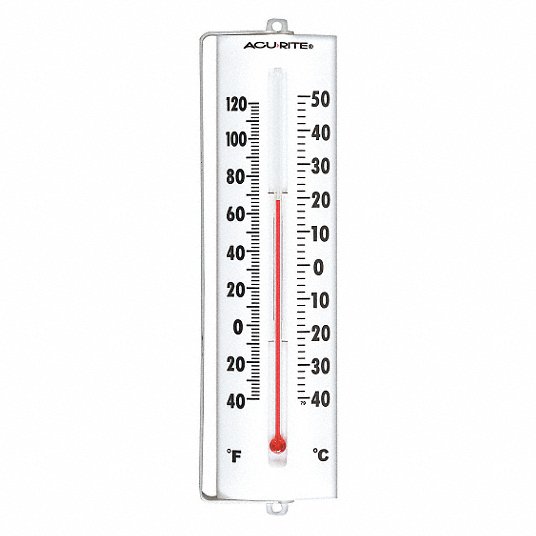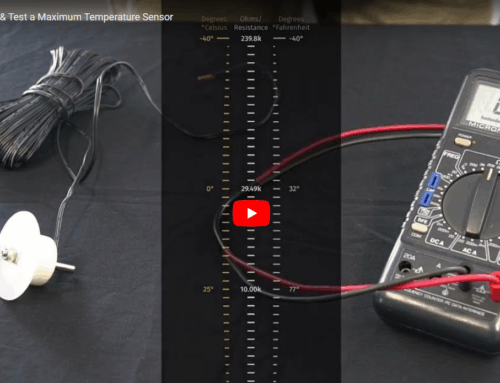Whether you’re planning your morning outfit or tracking seasonal temperature patterns around your home, understanding how temperature measurement works can enhance your daily weather awareness. You might find yourself asking:
What is a thermometer used for? Weather thermometers serve as your personal gateway to understanding the thermal conditions right outside your door, offering insights that go far beyond what distant weather stations can provide. From helping you decide whether to grab a jacket to tracking long-term climate patterns in your specific location, these precision instruments have become essential tools for weather-conscious homeowners.
What is in a thermometer? Traditional thermometers contain liquid mercury or alcohol that expands and contracts with temperature changes, while modern digital versions use electronic sensors that detect thermal variations and convert them into precise numerical displays.
Let’s explore how these fascinating devices work and why having your own weather thermometer can transform the way you interact with your local environment.
Key Takeaways
- Weather thermometers provide more accurate local temperature data than smartphone apps or distant weather stations.
- These precision instruments work through various methods – from liquid expansion in traditional mercury thermometers to electronic sensors in modern digital displays.
- Beyond basic temperature readings, weather thermometers help with daily planning, home management, energy optimization, and educational opportunities for the whole family.
- Five main types are available for home use, ranging from affordable mercury options to advanced digital models with memory storage and wireless connectivity.
- Whether you choose traditional analog elegance or modern digital convenience, owning a weather thermometer transforms how you interact with your local environment.
What is a Weather Thermometer?
A weather thermometer is a precision instrument designed to accurately measure air temperature in your immediate environment, giving you real-time data that’s often more reliable than weather station reports.
How Does a Weather Thermometer Work?
Weather thermometers work by detecting temperature changes through the expansion and contraction of materials – whether that’s liquid mercury rising in a glass tube or electrical resistance changing in digital sensors.
Many of us have some type of thermometer either inside or outside the house, which allows us to check the temperatures numerous times a day. There are many ways of measuring temperature, and several different scales with which to measure. The simplest technique for measuring temperature, is to take some kind of liquid which expands or contracts in response to heat and cold, and to measure the change in volume of the liquid. A standard mercury thermometer uses this principle.
What Is a Weather Thermometer Used For?
Weather thermometers serve multiple practical purposes that go well beyond simply checking if it’s hot or cold outside. Here are the key ways homeowners and weather enthusiasts use these instruments:
Daily Planning & Comfort
- Choosing appropriate clothing before heading outdoors
- Determining the appropriate times to open or close windows for natural ventilation.
- Planning outdoor activities like gardening, barbecues, or sports events
- Adjusting home heating and cooling systems for optimal comfort
Home & Property Management
- Monitoring temperature fluctuations that could affect plants or outdoor equipment
- Recognizing seasonal trends to prepare for weather-related home maintenance
- Protecting pipes from freezing by monitoring outdoor temperature drops
- Optimizing energy usage by understanding actual vs. forecasted temperatures
Weather Tracking & Education
- Recording daily high and low temperatures for personal weather logs
- Educating children about weather patterns and temperature changes
- Comparing local conditions to regional weather forecasts
- Building historical temperature data for your specific location
Professional & Specialized Uses
- Tracking conditions for outdoor work or construction projects
- Monitoring temperature requirements for hobbies like brewing, gardening, or farming
- Supporting small business operations that depend on weather conditions
- Providing accurate local data for weather-sensitive activities
Whether you’re a casual weather observer or a dedicated enthusiast, a quality weather thermometer puts precise temperature information right at your fingertips.
The Benefits of Owning a Weather Thermometer
There are several benefits to owning a weather thermometer. Let’s take a look at a few:
- Real-time data on demand – allows you to know the temperature right outside your door
- Shareable data more accurate than your mobile device – most mobile devices utilize data from a set location far away like an airport or school.
- Accurate temperature readings, again better than your smartphone
- Straightforward and easy to use – Whether analog or digital, readings are clear and simple to see
- Helps you stay aware of how to prepare yourself for daily life as well as how to prepare your home should a cold snap or heat wave come through – Grab a jacket or throw on some shorts, thermometers tell you what to expect when you head out.
- Great learning opportunity for the whole family – Science at home, thermometers can teach valuable weather lessons all year long
Types of Weather Thermometers
There are many kinds of thermometers used to monitor weather temperatures, such as bimetallic strip thermometers and constant gas volume thermometers, but let’s go over the five common thermometers used in home weather stations.
1. Mercury Thermometer
A mercury thermometer is a popular option often found in entry-level weather stations. It consists of a glass bulb attached to a stem that contains liquid mercury. As temperatures rise, the mercury expands and moves up the glass tube, indicating the temperature in Celsius or Fahrenheit. Entry-level weather enthusiasts favor mercury thermometers due to their affordability and user-friendly nature. However, they have drawbacks, such as slower response to temperature changes and requiring manual readings.
2. Resistance Thermometer
A resistance thermometer, also known as a resistance temperature detector (RTD), consists of a coil made of platinum that is wound into a spiral and mounted within a steel tube. By measuring the resistance, the temperature can be accurately determined. Resistance thermometers are known for their high accuracy and fast response times versus their mercury counterparts, making them ideal thermometers for professional weather stations.
3. Alcohol Thermometer
An alcohol thermometer works similarly to mercury thermometers but uses colored alcohol instead of mercury as the expanding liquid. These thermometers are safer for home use since alcohol is non-toxic, and they can measure lower temperatures than mercury thermometers since alcohol freezes at a much lower point. The colored alcohol makes readings easy to see, though they’re slightly less accurate than mercury versions.
4. Bimetallic Strip Thermometer
A bimetallic strip thermometer uses two different metals bonded together that expand at different rates when heated. As the temperature changes, the strip bends or coils, moving a pointer across a dial to indicate the temperature. These types of thermometers are excellent for outdoor use since they don’t contain fragile glass or liquids, making them popular choices for garden thermometers and outdoor weather stations.
5. Digital Electronic Thermometer
Digital electronic thermometers use electronic sensors like thermistors or integrated circuits to detect temperature changes and display precise readings on LCD screens. These instruments offer features like memory storage, wireless connectivity, and multiple sensor capabilities. They provide instant readings, can track temperature trends over time, and often include additional functions like humidity monitoring or weather forecasting.
Traditional vs. Digital Weather Thermometers
 When it comes to traditional vs. digital weather thermometers, the difference is truly preference. Traditional instruments offer a classic look and reliable accuracy, while digital thermometers are also reliable and especially easy to read.
When it comes to traditional vs. digital weather thermometers, the difference is truly preference. Traditional instruments offer a classic look and reliable accuracy, while digital thermometers are also reliable and especially easy to read.
Discover the Mini-Max, an elegant and traditional analog remote-reading thermometer with an exterior sensor that sends data to the interior display. Mini-Max is equipped with an electronic memory that stores high and low readings until manually reset. It provides readings in Fahrenheit and Celsius and features a temperature minder to let you mark current temperature and note any changes.
Or take a look at the Mystic, an easy-to-use digital thermometer and barometer. Mystic combines both outdoor temperature and barometric pressure in one beautiful, digital instrument. It provides readings in four different modes: Present, High, Low, Wind Chill temperature and Rate of Change for barometric pressure. It also features user-selectable units of measurement for temperature (°C, °F) and barometric pressure (inHg, mmHg, kPa, mb). Memory data is protected by a 10-year backup to preserve data during power outages.
Final Thoughts
Experience weather temperature monitoring like never before with Maximum Weather Instruments. Our cutting-edge weather thermometers, equipped with high-precision resistance temperature detectors (RTDs), deliver unparalleled accuracy and reliability whether it’s tracking indoor or outdoor temperatures. Discover the full range of our innovative weather thermometers on our website and make weather monitoring a breeze.













I like it